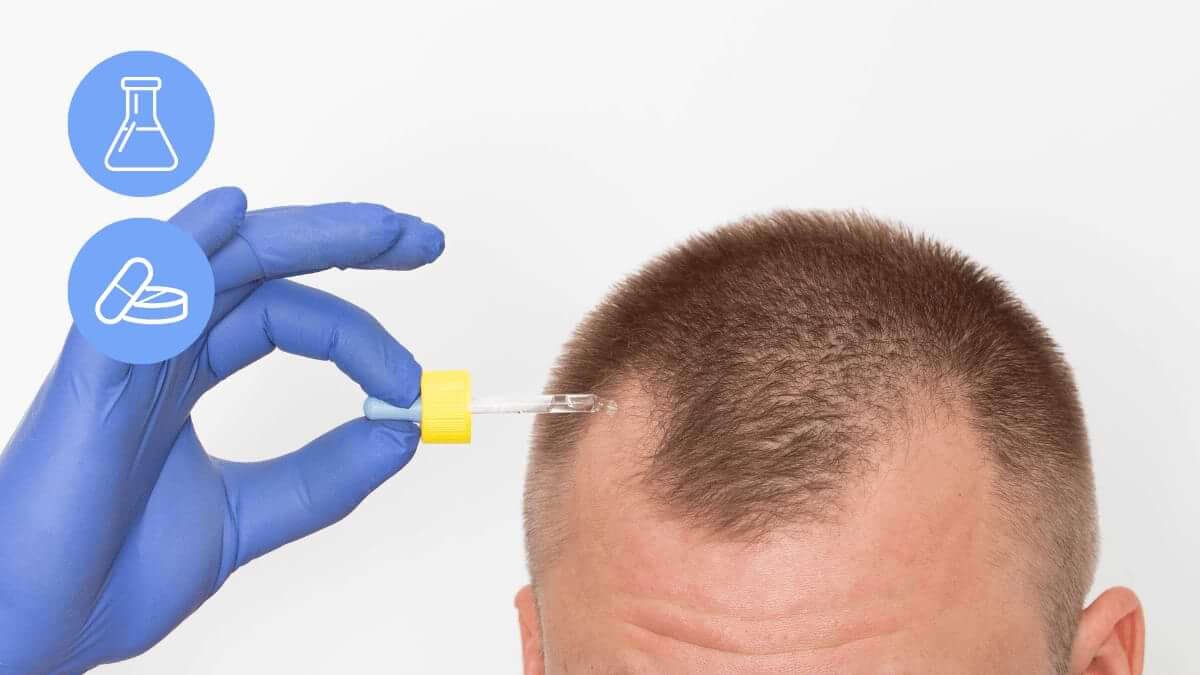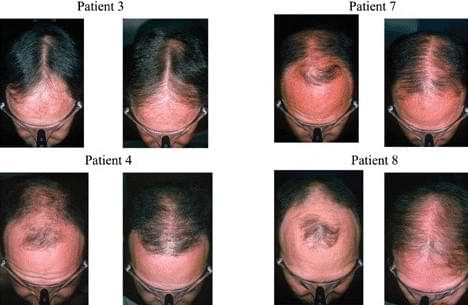In 2024, if you are experiencing hair loss, your two most prominent non-surgical options are Finasteride and Minoxidil.
Both of these treatments are so popular and reliable that they apply to almost every patient at nearly every stage of hair loss:
☘️ If you have only started seeing a bunch of hair on your pillow every morning lately, then these options will reverse the hair loss.
💊 If you have been experiencing hair loss for quite some time and even researched or considered a hair transplant, these treatments will stop the hair loss to prepare you for surgery.
💉 And if you have already had surgery, you can still rely on them to prevent further hair loss from other parts of your scalp entirely.
But although they are similar in terms of being beneficial in almost every scenario, they are different in one crucial part:
According to studies, one is more effective.
But before we come to that comparison, you should know about their strong and weak points.
That is why, in today’s article, I will explain what makes both methods famous, how effective they are, and when they are suggested for what type of patients:
Table of Contents
I will start by explaining Finasteride first:
Finasteride Is the Best in Its Field for a Reason.
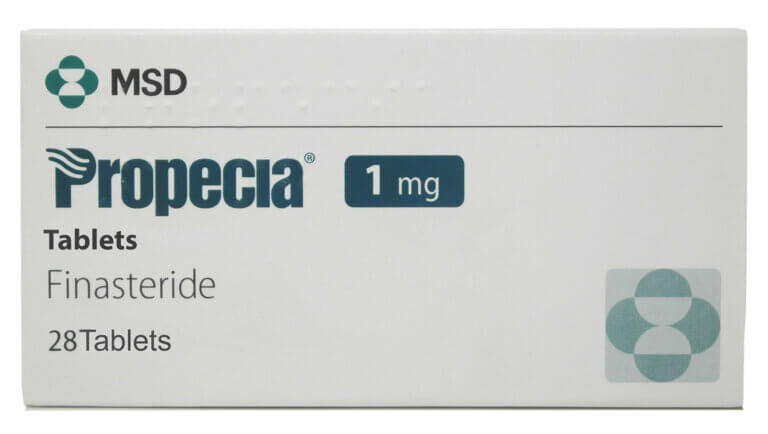
Well, its two reasons, actually:
1️⃣ In study-based standards, its unique mechanism is the best at reversing hair loss.
2️⃣ And it comes with multiple options based on your preference: Oral and topical.
However, regardless of which version you choose, the exact working mechanism will still guarantee your hair’s health.
So, let me explain that first:
How Does Finasteride Work?
In every patient experiencing male pattern baldness (MPB), there is a hazardous hormone in their body called dihydrotestosterone (DHT).
👉 If you are experiencing hair loss, this hormone is the primary reason, and Finasteride’s job is to prevent the production of it directly.
This hormone is created by an enzyme that converts testosterone to DHT, called 5 alpha-reductase, or 5-α reductase for short.
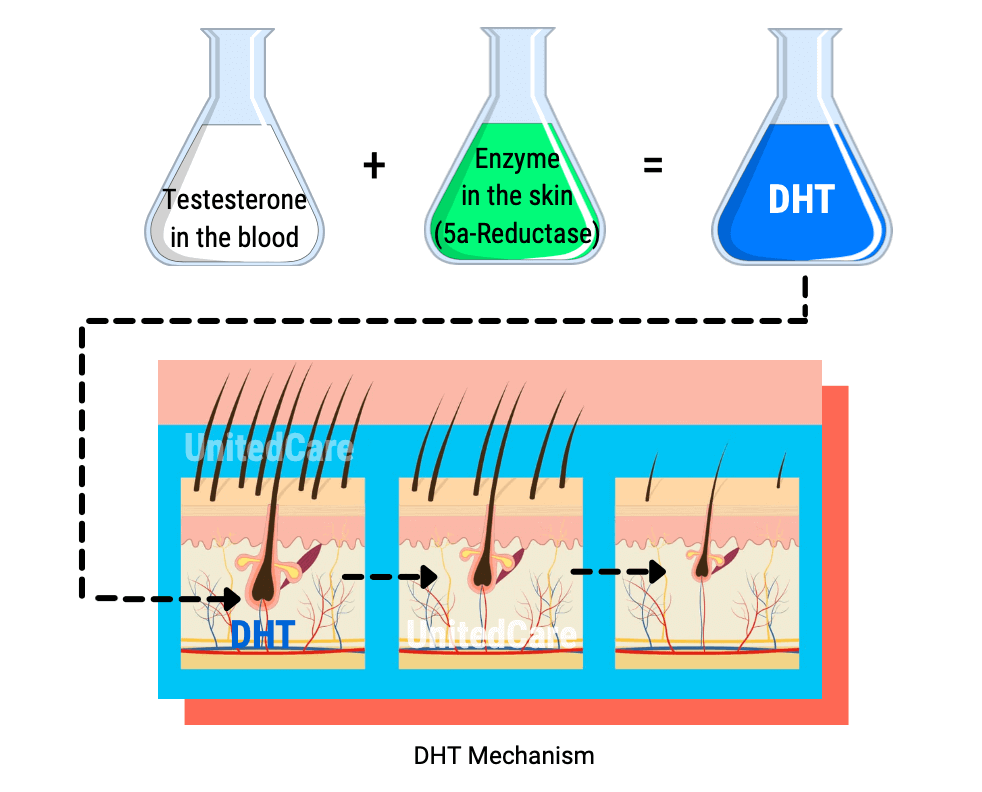
I know that all of these medical terms feel overwhelming, but don’t worry and stick with me; they are almost done, and I will explain them in simpler terms.
Essentially, this enzyme is the producer of DHT. All Finasteride has to do to protect your hair from it is to prevent the enzyme from working.
⚠️ Usually, without an inhibitor like Finasteride, your hair starts to fall mainly because your body constantly and excessively produces these hormones that build up to a harmful amount.
And as they build up with every day, your hair starts to fall at a pace that gets dangerously faster in time, turning into MPB.
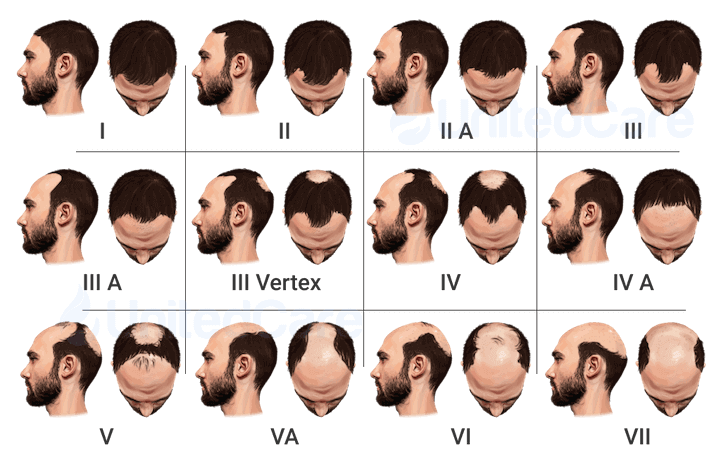
When Finasteride enters this scenario, it prevents this enzyme from working. Thus, testosterone no longer converts to DHT.
💡 Since Finasteride works by preventing (or, in other words, by inhibiting) the 5-α reductase enzymes to stop the DHT hormone that causes baldness, it is called a synthetic 5-α reductase inhibitor.
In short, Finasteride shows its effectiveness by directly locating and preventing the hormones that cause baldness.
In fact, Finasteride’s effectiveness rate is so high that it is the leading medication in many studies about hair loss solutions:
As clinical trials and studies show, Finasteride has been the best option for decades.
Finasteride became the drug known today in 1997 when the FDA approved the 1 mg dosage to treat male pattern hair loss.
But more importantly, even in the very early years of its career, this medication has been so successful that only two years after its approval, study results were already being released:
A 24-month study made on 1879 patients
▶ In 1999, Dr. K. J. McClellan and Dr. A. Markham conducted a clinical study on 1879 patients with male pattern baldness to test the effectiveness of Finasteride on hair loss.
▶ Patients have taken 1 mg of Finasteride a day orally.
▶ 48% of patients who used Finasteride for one year and 66% of patients who used it for two years showed a significant increase in hair growth.
▶ 83% of patients showed no signs of further hair loss compared with baseline after two years.
▶ Overall, only 7.7% of Finasteride patients reported mild to moderate treatment-related adverse events.
💡 Researchers Dr. K. J. McClellan and Dr. A. Markham stated in their research that:
“Oral Finasteride promotes scalp hair growth and prevents further hair loss in a significant proportion of men with male pattern hair loss.”
As the medication got more recognition and fame, studies with a broader range of patients and conditions started reaching the surface:
A 48-week study made on 79 random patients over the globe
➡️ In 2005, a group of dermatologists, with the lead of famous Dr. Matt Leavitt, conducted one of the most prominent hair transplant studies on the effects of Finasteride.
➡️ 79 global patients with androgenetic alopecia (20-45 years of age) were randomly selected and assigned to treatment with 1 mg of Finasteride.
➡️ Visible increases in frontal scalp hair post-transplant were recorded for 94% of patients in the Finasteride. The treatment was generally well tolerated.
➡️ Study conducted that to minimize side effects, educating the patients to remove hesitations and prohibit the placebo effect is crucial.
Finally, as Finasteride became the first suggested supplement in almost every clinic, it started appearing in more modern studies:
A more recent 48-week study made in 2021
💠 In 2021, a group of combined researchers and dermatologists conducted a comparative study with a wide range of male and female patients from different ethnicities and backgrounds.
💠 The study contained different groups of patients that either took 1 mg of Finasteride or 5 mg of Finasteride.
💠 Study is supported by various graphics, demographics, images, and comparisons to earlier studies.
💠 Especially through (the more recent and modern) comparison of the doses, these clinical trials have proven that the efficacy of oral Finasteride significantly reverses the progression of hair loss in men.
Overall, with a research-based success rate this high, Finasteride is my first suggestion to most patients experiencing hair loss.
However, I should also warn you that no matter how small and rare they are, Finasteride does have some side effects, and that is why it has both oral and topical options:
To keep your safety a priority, you should know about its side effects.
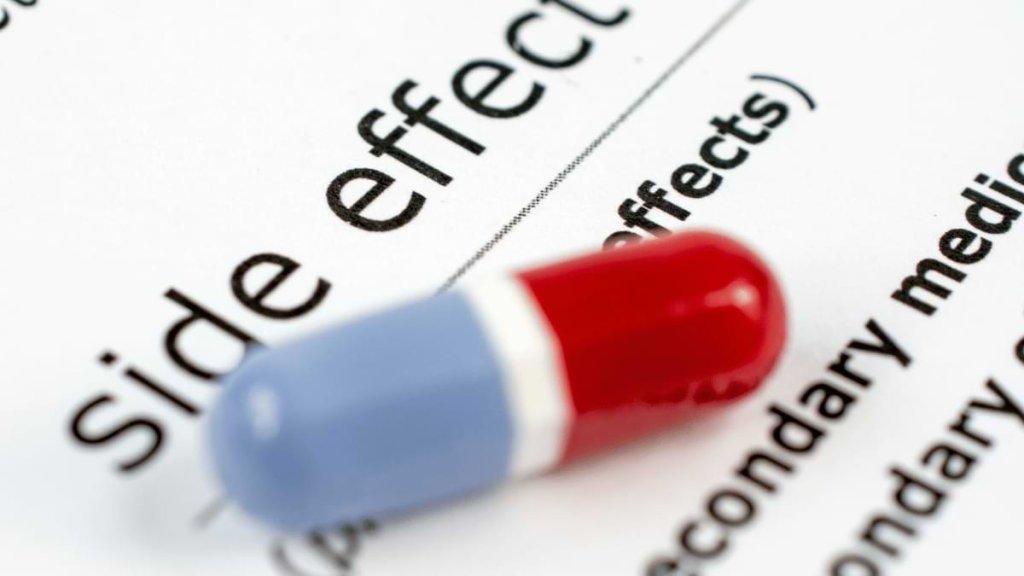
Like every other medication, Finasteride comes with some possible side effects.
💡 These side effects are scarce, temporary, and reversible with the right approach. However, they still exist, and you should know about them.
The most commonly listed ones are:
- Skin conditions such as rash.
- Scalp and face reactions such as swelling.
- And the one that concerns the patients the most: Sexual side effects.
🩺 Although the list seems pretty extensive and scary at first glance, I have come to tell you that your health is still safe thanks to two factors:
1️⃣ Each side effect in this list mostly depends on a previously existing disease to emerge.
2️⃣ And they can all be stopped and reversed.
Starting at the top of the list, Finasteride will NOT directly create these side effects unless you already have a skin disease.
As scientific data shows, even in the case of a disease, the chances of a side effect are rare and utterly reversible if you were to stop using Finasteride simply.
👍 Since Finasteride is not a one-time treatment like an injection, stopping and completely reversing its side effects is possible.
And the way to do that is simple:
Stop using it once the side effects appear.
As research shows, these side effects are rare; when they appear, they appear mildly, and in the cases of severe consequences, they are completely reversible if you stop using Finasteride.
And as I have mentioned, in most cases, these side effects are triggered by another disease or condition.
So, your medical background and current medical conditions will determine your eligibility for Finasteride once you consult your doctor about this. 🍀
To sum it up, the situation comes with two fail-safe options:
🟢 After learning about your existing skin or sexual conditions during a consultation, your doctor will not prescribe Finasteride. So, it is always best to consult with your doctor.
🟢 Your doctor will inform you to stop using Finasteride if any side effects appear. All the side effects will fade away when you stop using it. So you will not have permanent skin changes on your scalp or elsewhere.
As a doctor who has seen how avoiding consultation can harm patients, I want to inform you about one last condition:
There is also the possibility of experiencing these side effects because of the nocebo effect.
The Nocebo effect is, in many ways, the opposite of the more popular placebo effect.
👉 When a patient hears about the potential side effects of treatment and believes it will happen to them, they are more likely to stress over them and, in turn, more likely to experience them.
In other words, research shows that patients informed about potential sexual side effects and who worry heavily about them are more likely to experience them.
ℹ️ Regardless of origin, aside from only appearing in 0.7% of the patients, these side effects are mostly connected to an external factor and are entirely reversible.
Lastly, even if these factors are not enough to satisfy you, then I can provide a second Finasteride option, which is statistically safer.
Most of these side effects and the concern they bring derive from the fact that Finasteride’s prescribed version is usually an oral drug (1mg), which understandably can be frightening.
👉 However, Finasteride also has a topical version for situations like this.
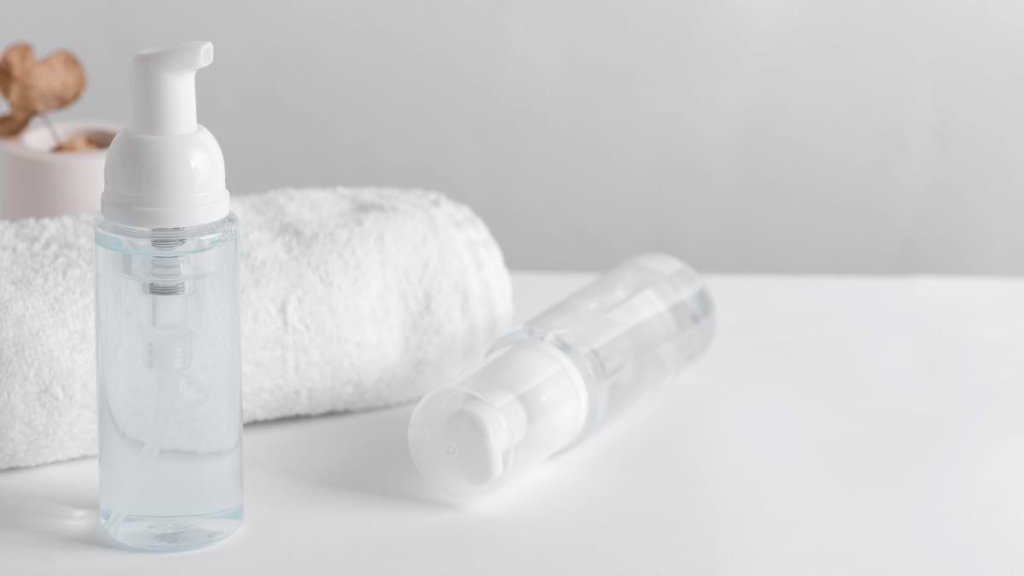
The topical version of Finasteride comes in various forms, but the most popular ones are gels and sprays.
Topical Finasteride has two essential features that make it famous:
1️⃣ The first is its drawback: According to studies, the topical version is almost twice as slow in showing its effectiveness as oral Finasteride.
2️⃣ But the second part is its positive side: According to the same studies, compared to the oral version, topical Finasteride patients show almost no sign of side effects.
🥼 It is essential to note that, as the researchers mention, the placebo effect highly affects these results. However, in any case, patients have less chance of experiencing any side effects with the topical version.
Furthermore, when you are deciding between the two, you should also note that the FDA does NOT approve the topical version of Finasteride.
💡 So, ultimately, between topical Finasteride and oral, topical is safer but less effective. Also, oral is more effective and FDA-approved, but it also has a higher rate of showing side effects.
However, your chosen option’s effectiveness will only increase with suitable supportive hair restoration options, such as a hair transplant:
Finasteride’s effectiveness increases when combined with a hair transplant.
Usually, I recommend Finasteride to two types of patients:
➡️ Patients who have experienced early versions of hair loss.
So, patients from this category must continue using Finasteride to stop their hair loss.
➡️ However, from a more difficult category, some patients need to use Finasteride after a hair transplant.
Patients from this category need to mix Finasteride and hair transplants because their hair loss has advanced in some parts so highly that their hair follicles are entirely lost.
💉 As Finasteride does NOT regrow lost hair follicles, in these scenarios, patients with advanced hair loss will need hair transplants to cover the bald areas.
💊 And since hair transplants do NOT protect the rest of your scalp from experiencing hair loss in the future, Finasteride is necessary to stop further hair loss.
However, to achieve great results, you need to pay attention to some key points, such as when to start and stop.
After a hair transplant, I recommend waiting at least 4 weeks before beginning supplement medications such as Finasteride.
Also, Finasteride is not a drug that you can use only once.
To keep its effect, you must continue using it daily.
As supported by a study, I advise every patient to continue using Finasteride until a year after the surgery since it improves the results and dramatically boosts hair density and counts.
👍 And to decide when to stop, you can stop whenever you wish to stop and leave without any permanent damage. As I have mentioned, Finasteride’s effects are reversible.
As various studies show, when you follow these instructions clearly, your hair transplant’s effectiveness increases significantly with Finasteride’s help.
A global study focusing on Finasteride’s effectiveness after a hair transplant was conducted in 2005 to highlight its effectiveness.
A group of dermatologists, with the lead of Dr. Matt Leavitt, conducted a study that lasted for 48 weeks on 79 different global patients. These patients were from around the world and were selected between the ages of 25 and 45, so they were ideal candidates.
After using 1 mg of Finasteride daily, visible increases in frontal scalp hair after the transplant were recorded for 94% of patients.
Ultimately, Finasteride is an extremely effective, reliable, fact-checked, and prominent supplement that any doctor will confidently suggest.
✅ Of course, in any case, I would always recommend that you consult with your doctor beforehand to see if you are an eligible candidate for using it.
And speaking of which options you have if you find yourself ineligible for Finasteride:
Understanding When Minoxidil Becomes Necessary Is Crucial.
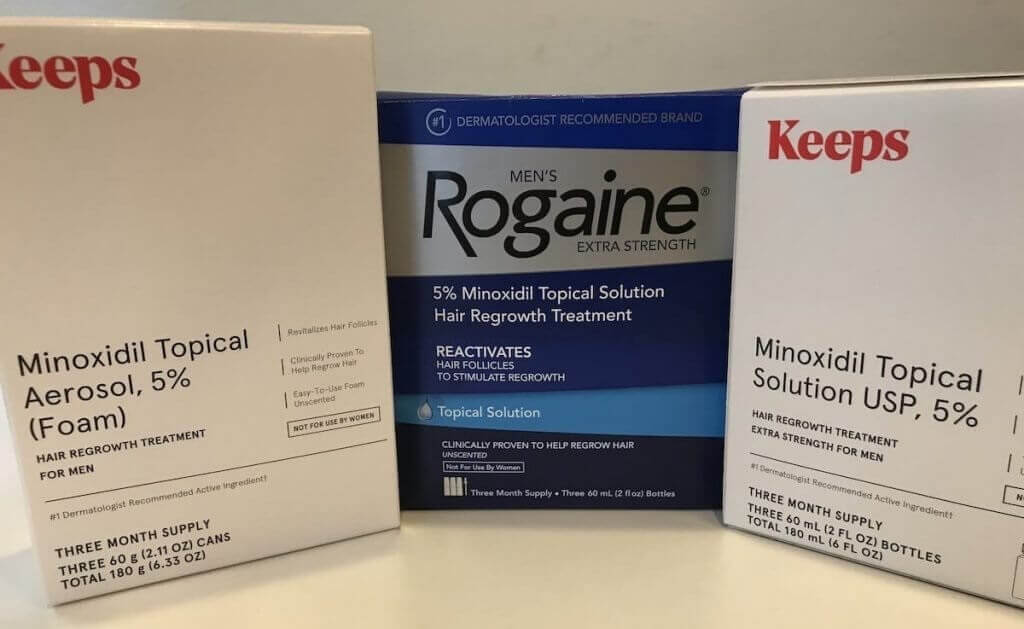
For patients who do not and cannot use Finasteride, Minoxidil is the best FDA-approved option for treating male pattern baldness (MPB).
In its efficiency at reversing hair loss, Minoxidil is famous for two things:
💠 Its mechanism can also replace already damaged, thinner hair.
💠 And although it is less effective, it contains no potential sexual side effects.
Both of these benefits lie within the working mechanism of Minoxidil:
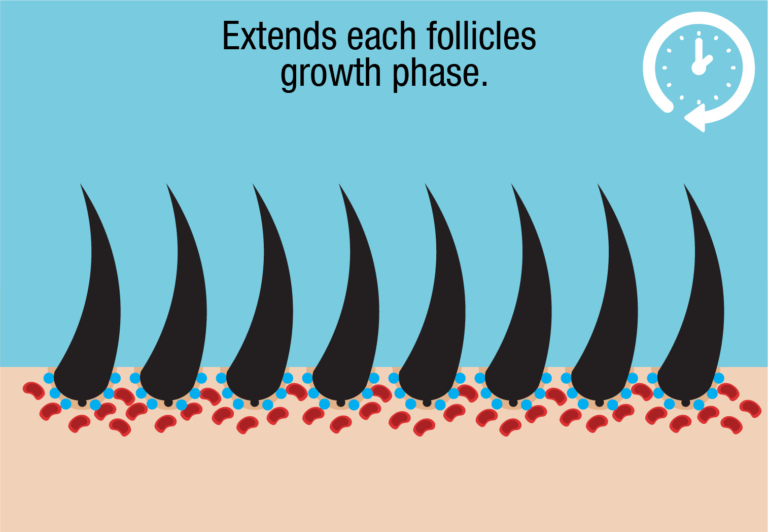
👉 One thing I should clear out first is that Minoxidil does NOT directly cause you to regrow lost hair magically.
Instead, it supports your body’s natural hair-growing and replenishing process.
To adequately explain, Minoxidil works by doing two things:
1️⃣ Minoxidil is a vasodilator that boosts hair growth by increasing the blood flow to your scalp.
Vasodilators are medications that widen the blood vessels and increase the blood flow.
When you apply it to your scalp, your blood vessels around the balding areas are widened, which in turn causes more blood containing oxygen and healthy nutrients to flow into your scalp.
This process feeds your follicles more, promoting a quicker growth of new, thicker, and healthier hair, which fights excessive balding you are experiencing by slowing or even completely stopping it.
2️⃣ Minoxidil replaces thinner hair.
Contrary to popular belief, hair shedding is not the only way to experience visible balding on your scalp.
💡 In fact, due to male pattern baldness, most of your hair follicles experience shrinking before shedding. This process can come to such a degree before falling out that your hair can look thinner and bald even before you start losing it.
Minoxidil contains a certain type of nitric oxide moiety. 🧪
This is part of a molecule that can bind to nitric oxide and cause your hair follicles to shed, which stimulates the growth of new follicles more quickly and starts replacing shed hair with thicker hair.
Overall, its process is simply about boosting your body’s natural hair growth in the right direction, which is the direction of your new shining hair.
🔔 But, I should remind you that just like Finasteride, Minoxidil is NOT a one-time solution.
You will have to continue using it to maintain its benefits, and those effects will not appear after a single night.
Additionally, it may take several months, up to 1 year or more, to see results, so you must be patient.
But as studies show, the results are exceedingly good:
Minoxidil’s research-based success in regrowing lost hair is unlike any other.
Minoxidil first found its way to the market in 1979, and it is among today’s medications for treating male pattern baldness.
Then, in 1988, the FDA approved 1 ml of the liquid solution and half a cap of the foam solution.
Since then, it is an easily accessible over-the-counter topical medication.
And that is why it is as famous in studies as it is in everyday use:
A 24-month study made on 326 patients
▶ In 1999, with the lead of Dr. Dean Thomas Scow, a group of researchers conducted a clinical study on 326 patients with male pattern baldness to test the effectiveness of Minoxidil on hair loss.
▶ Patients have applied 1 ml of Minoxidil on the scalp twice daily.
▶ 50% of patients who used Minoxidil for two years grew their hair in a much denser thickness.
▶ Patients who stopped using Minoxidil for more than 3 months have reported experiencing hair loss again.
💡 With the lead of Dr. Dean Thomas Scow, a group of researchers stated that:
“Patients found the growth pleasing, and these results led us to conclude that Minoxidil is effective in slowing or preventing hair loss.”
As Minoxidil started appearing more in everyday life, further research was conducted on it:
A 48-week study made on 984 random patients in Germany
➡️ In 2005, Dr. Jan Rundegren led one of the most prominent hair transplant studies on the effects of Minoxidil.
➡️ 984 German patients with androgenetic alopecia of varying stages were randomly selected and assigned to treatment with 1 ml of Minoxidil twice daily.
➡️ Researchers have concluded that balding areas have become smaller in 62% of patients. The treatment was generally satisfactory.
➡️ Overall, 63,7% of patients have found the treatment effective.
And finally, as Minoxidil became more prominent, more objective and wide-range studies were conducted on it:
An open, randomized, and comparative 12-month study made in 2004 worldwide
💠 In 2004, a group of combined researchers and dermatologists conducted a comparative study with a wide range of MPB patients from different ethnicities and backgrounds.
💠 The study contained different groups of 65 patients that took 1 ml of topical Minoxidil twice a day.
💠 At the end of the clinical trial, the cure rate for Minoxidil was 52% for the patients.
💠 Out of all the patients, only 1 has experienced any event that could be perceived as a side effect, such as a slight scalp irritation. These adverse effects disappear after the treatment has stopped.
Overall, as the studies also show, I would confidently suggest Minoxidil to any patient looking for a safe solution to hair loss.
However, although Minoxidil is clearly safer than Finasteride in sexual conditions, it still has a slight chance for side effects, and that is why you should know about its other versions:
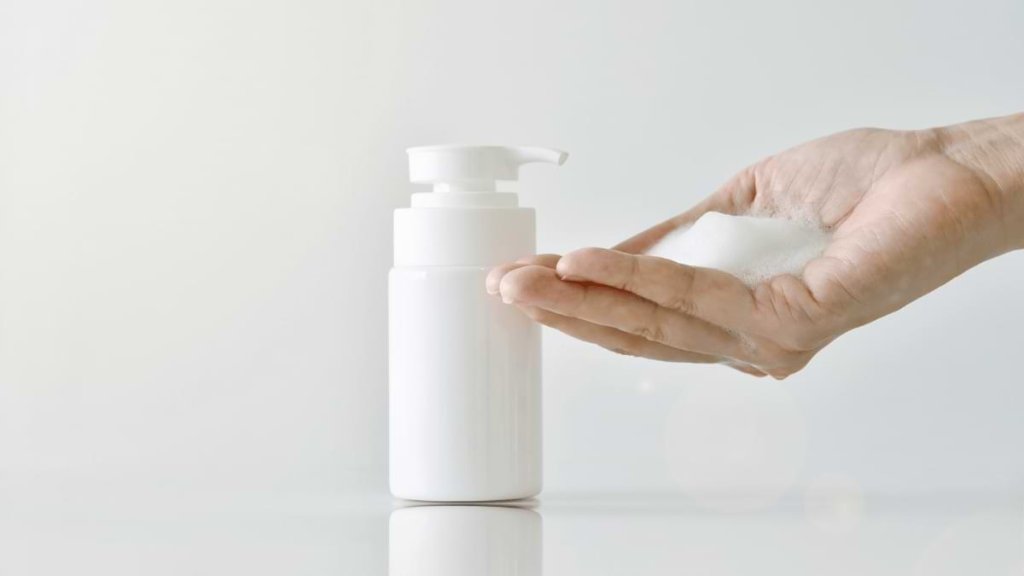
Just like Finasteride, Minoxidil comes in two forms.
🅰️ You can benefit from it as an oral medication you can get with a prescription.
🅱️ And you can use its topical foam (or liquid solution) that you can buy from any pharmacy.
⚠️ The important thing to point out is that this medication, too, is NOT a permanent “cure” for completely eliminating further hair loss at once overnight.
To benefit from its effectiveness, you will have to keep using it.
Thankfully, Minoxidil’s list of side effects is much smaller, and they are much rarer as they are milder.
👉 Minoxidil’s rare side effects include:
- Scalp sensitivity,
- skin dryness,
- irritation around the application site,
- and increased heart rate.
Overall, as I value our patients’ health after surgery, I should also inform you that you can resume using Minoxidil at any time. So, should you experience any side effects, you can and should stop using it.
Lastly, in that case, you should notify your doctor at once. 🩺
And in the best-case scenario, if everything goes safely, you should combine Minoxidil with a hair transplant to get the most out of it:
Minoxidil’s effectiveness shines the most when combined with a transplant.
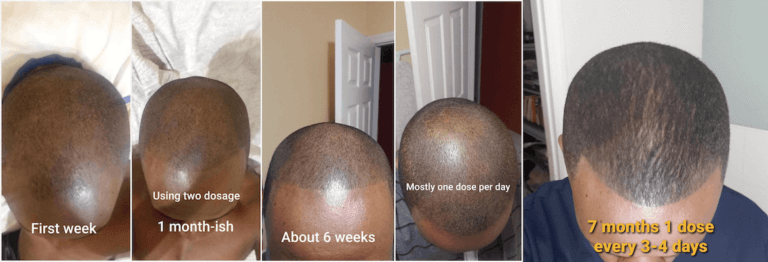
Minoxidil is usually about helping you regrow lost hair.
However, according to various studies, Minoxidil can help a patient after a hair transplant in three ways:
➡️ Minoxidil can help by supporting the growth of your newly transplanted hair.
The success or failure of a hair transplant is defined by the number of hair follicles that survive the first year of the post-surgery process. Because naturally, there is a chance that your body can reject some of the transplanted hair.
In this aspect, Minoxidil does a great job of minimizing the loss or covering it entirely, as using it periodically after a hair transplant can significantly accelerate new hair growth.
So, I advise our patients to use topical Minoxidil starting after the first month and continue until the end of the 12th month.
➡️ Minoxidil can help by eliminating post-surgery shock loss.
A hair transplant is an experience that creates a lot of immense physical trauma on your scalp. Naturally, after the surgery, some of your non-transplanted hair can fall victim to shedding, known as shock loss.
Hair loss due to shock loss is typically temporary, but sometimes, it can lead to further hair shedding that does not grow back. Minoxidil eliminates this phase and possibility.
➡️ Minoxidil can help by removing the potential for further hair loss.
⚠️ A hair transplant does not protect you from hair loss in other areas.
The parts of your scalp that did not get a hair transplant are still vulnerable to the effects of androgenetic alopecia (MPB). Also, depending on your age, it is still highly likely that further hair loss will appear on other parts.
To prevent this scenario and the need to undergo another hair transplant surgery in the future, Minoxidil is your go-to option.
Ultimately, though its effectiveness, possibility for side effects, and best-case scenarios differ from Finasteride, Minoxidil is an essential supplement for hair transplants.
🔔 So, the only question left is:
Which is the best?
Finasteride vs. Minoxidil: 3 Key Differences to Help You Decide.
In my career, I have seen varying cases of either treatment being better than the other one.
So, I will use three factors to make a more objective comparison between the two.
🥼 According to the results, you can decide on your own, or you can scroll down to learn about my personal medical recommendation.
Here is my comparative analysis of Finasteride versus Minoxidil:
1️⃣ Research-based effectiveness of Finasteride and Minoxidil.
Pros of Finasteride
- Finasteride prevents hair loss and, in turn, significantly increases hair growth in the 66% of patients who use it for two years.
- 83% of patients showed no signs of further hair loss compared with baseline after two years.
- Finasteride has a more consistent effectiveness rate. The effectiveness of Minoxidil varies from one patient to another and from one dosage of Minoxidil to another ( such as the %2 dosage and %5 dosage).
- Finasteride improves hair density in all patients who have used it for four years.
Pros of Minoxidil
- Minoxidil reduces the size of balding areas by promoting hair regrowth in 62% of patients.
- 63,7% of patients find Minoxidil to be effective and satisfactory.
- Minoxidil shows hair density improvement in %50 of patients who have used it for two years.
2️⃣ Long-term effects of both treatments based on how they work and need to be used.
Pros of Finasteride
- Finasteride is easy to use and more effortless to include in your daily life. Minoxidil requires daily application of a foam or a liquid to your scalp, which takes a lot of time. It’s always easier to take a pill.
- It eliminates the primary reason for hair loss directly as Finasteride attacks and inhibits the enzymes responsible for balding.
- It works great for patients with hair loss in their frontal areas.
Pros of Minoxidil
- Minoxidil is an over-the-counter solution you can easily access. On the other hand, you need a prescription for Finasteride.
- It encourages regrowth. Minoxidil helps stimulate hair regrowth, but Finasteride works by preventing the reasons for hair loss.
- Minoxidil lasts longer before losing its effects. It takes almost three months for Minoxidil’s effects to fade away, while for Finasteride, it is mere days.
- It works better for patients with hair loss in their central areas.
3️⃣ Safety evaluations of the medications.
Pros of Finasteride
- Finasteride’s side effects are rarer. Finasteride’s rate for showing side effects is %0.7, while Minoxidil’s is %1.5.
- Finasteride’s side effects are directly linked to its working mechanism of swallowing pills. So, as soon as you stop using it, the side effects disappear, while Minoxidil’s side effects take some time to fade away.
Pros of Minoxidil
- Minoxidil does not invade your bloodstream. Minoxidil is a topical medication applied to your scalp’s skin.
The standard form of Finasteride, on the other hand, is oral. The fact that it enters your blood may be concerning for some patients. - Although Minoxidil has a slightly more common chance of showing side effects, its side effects do not include sexual ones.
So, to put it in other terms, these treatments do really seem like an apple or orange situation.
They both are very different and quite remarkably effective in what they do.
✅ So it is very natural if you find yourself unable to decide between the two.
But don’t worry, that is why I’m here:
Here Is My Suggestion on How to Select One.
As both options are pretty prominent, for patients who seek an answer on how to determine which one to choose, I offer a solution:
My clinical advice is that your first pick should always be 1 mg of oral Finasteride daily.
As I’ve mentioned above, countless studies proved that oral Finasteride is much more potent than topical Minoxidil.
Alternatively, if a patient experiences any type of disease or illness, has any kind of concerns about the medication, or simply does not prefer to use it for any reason, then I will advise Minoxidil as the second best option.
If you find yourself to be in this category, then I suggest you apply the topical liquid solution of Minoxidil half a cap to your scalp twice daily.
However, ultimately, if you do not have any conditions preventing you from using either medication (or with your doctor’s approval, even both), there is no definitive answer.
Your body and your hair are entirely unique. 🌱
🔔 If you have a hair loss problem but don’t know what to use before or without a hair transplant, consult a dermatologist as soon as possible.
That is the only way to ensure you stop the process before the damage is irreversible.
And that is why we are here:
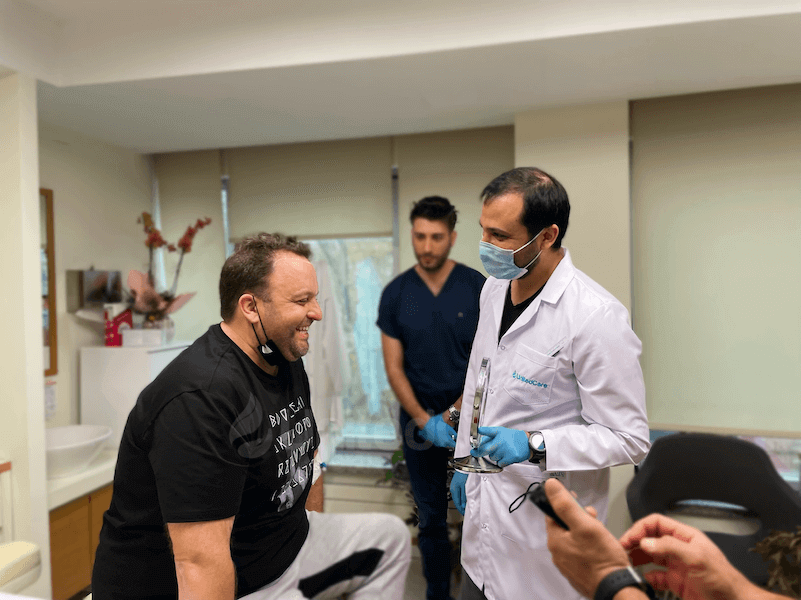
At UnitedCare, we begin your hair transplant process by offering you a free one-on-one consultation with our expert doctors to determine your suitability.
💊 If so, our holistic approach provides advanced technologies and bio-enhancements to ensure you do not need another surgery.
Once you have decided on a method, we begin the treatment with the utmost attention. 💉
But most importantly, we stay in contact with our patients even long after the surgery, ensuring that your transplant becomes permanent. 🍀
Affordable hair transplant costs, a holistic approach, and experienced dermatologists on-site are here to provide you with the right solution.
Ready to begin the journey? Click here to start the first step with a free consultation:
Find out how to support your transplant with the right supplements.
Restore your natural look with a Dermatosurgeon’s help.
Frequently Asked Questions (FAQs)
Are Minoxidil and Finasteride FDA-Approved?
Yes, in fact, these two are the only two FDA-approved medications for treating androgenetic alopecia.
Is It Better to Take Finasteride With or Without Minoxidil?
It depends on how much your hair loss has advanced. However, if you are in a condition where you can use either, then you can combine them (along with your doctor’s confirmation, of course) to likely achieve better results.
Is Minoxidil Pointless Without Finasteride?
No, it is not. Both medications work in different mechanisms to promote hair regrowth. Finasteride works by preventing DHT, and minoxidil by increasing the blood flow to your scalp. So, their mechanisms do not affect each other.

